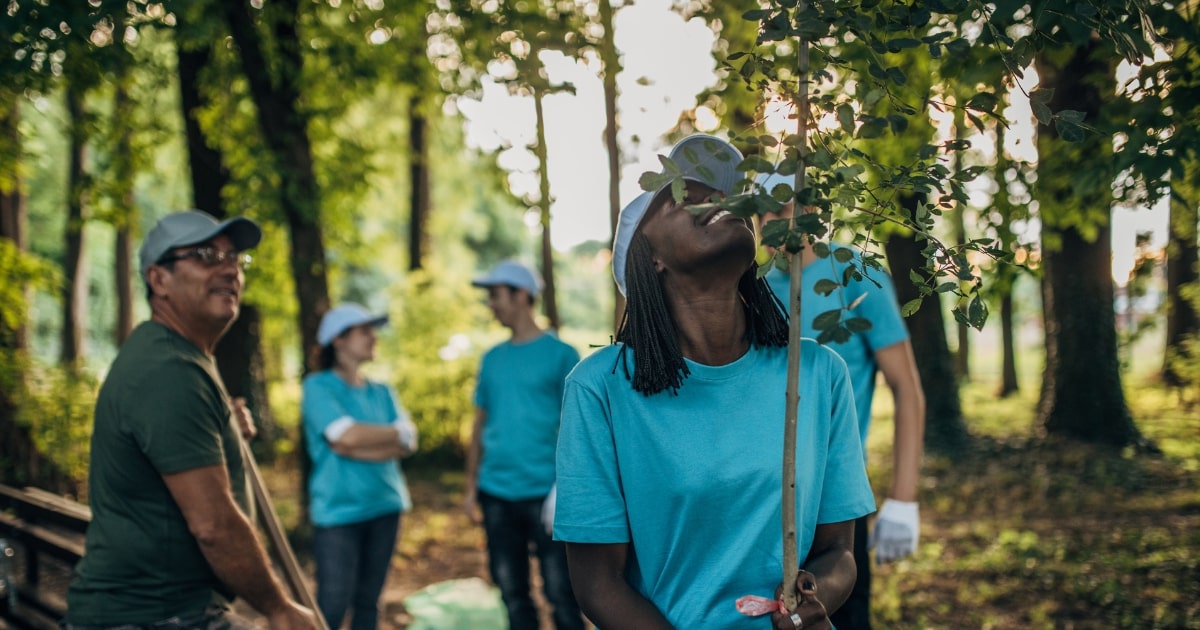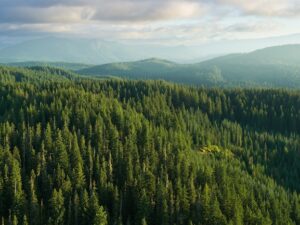By Katie Zakrzewski
At the December 2022 conference, CCL unveiled our new policy areas:
- Carbon pricing
- Healthy forests
- Building electrification and efficiency, and
- Clean energy permitting reform
You may be wondering: why are healthy forests important for mitigating climate change? As it turns out, having healthy forests and an abundance of trees helps the communities in which they grow, complements other areas of our policy agenda, and gets us closer to America’s emissions reduction goals. Below are some of the ways that healthy forests mitigate climate change.
Forests lead to vibrant, cooler communities
Extreme heat is considered the silent killer of climate change — each year, 12,000 Americans die from heat-related causes that are exacerbated by climate change. Fortunately, shade and coverage provided naturally by trees can cool down the surrounding area by more than 10 degrees Fahrenheit. However, historic and discriminatory policies have left neighborhoods of predominantly low-income people and people of color with significantly less tree coverage, increasing their temperatures by more than 15 degrees Fahrenheit, as well as the likelihood of suffering from heat-related medical issues. This means that planting trees is one of the quickest, cheapest, and most effective ways to lower temperatures and save lives. Plus, beautification efforts, such as planting trees, improve mental health among residents, and encourage people to invest in the local economy.
Electric grid relief
When temperatures are higher, residents spend more electrical output on cooling methods, such as air conditioning. When every household in several neighborhoods and cities uses lots of electricity to stay cool, an enormous strain is put on the power grid. This can lead to power outages, and, subsequently, heat-related health issues. This means that the more trees there are to cool neighborhoods and cities, the less strain an area’s power grid will face.
Forests bring us closer to net zero
As the ozone layer is whittled away by greenhouse gases, the planet becomes more susceptible to climate-related phenomena. Carbon is one of the gases in the atmosphere that poses a significant threat to the ozone layer. Fortunately, trees pull carbon dioxide out of the air and convert it into oxygen. Not only does this process purify the air around us, but it also removes 12% of America’s carbon pollution from the air each year. This means that by expanding our forest and tree populations, we can reduce carbon emissions by up to 22% in the next seven years.
There are several ways that we can preserve our trees and forests:
Increasing the number of trees
Climate change-amplified phenomena, such as droughts and wildfires, play a significant role in reducing trees across the country. This means that we need to not only plant more trees but develop forest management policies that protect trees that already exist.
End and punish deforestation
Every year, our planet loses 25 million acres of trees to deforestation. This deforestation most commonly occurs in tropical countries such as Brazil and Indonesia, often to make room for crops and livestock. To discourage illegal deforestation, we can stop importing products produced on land undergoing illegal deforestation. Additionally, we can also invest in wood products that are durable and less likely to need frequent replacement, while also opting for wood products instead of concrete, steel, or plastic when possible.
Incentivizing private landowners
Over half of America’s land is privately owned, and landowners have limited resources and incentives for managing their trees. By creating financial benefits, we can encourage private landowners to preserve healthy forests and mitigate the effects of climate change.
Sign up and volunteer for climate change
Help us preserve urban forests
Send a quick message to Congress
Read more:






